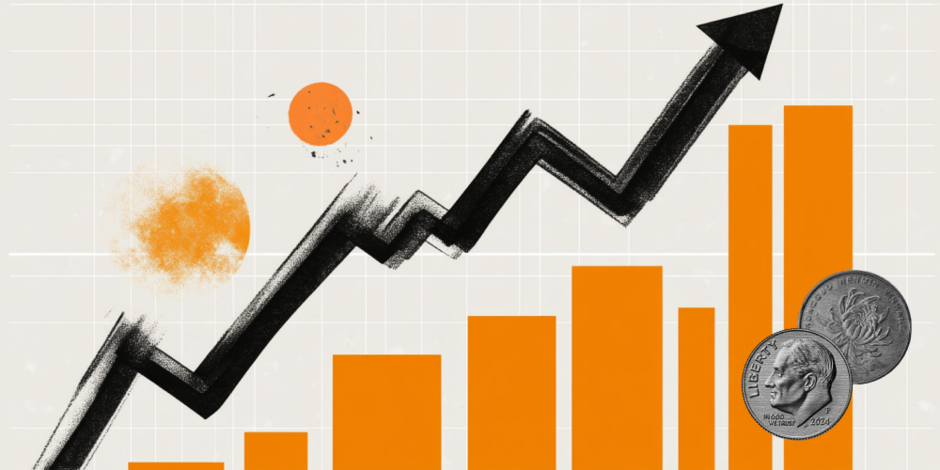Created
: 2025.07.14














![]() 2025.07.14 19:03
2025.07.14 19:03
The US Dollar is trimming previous gains on Monday. It is trading practically flat, within Friday's trading range, with the market mood cautious as investors come to terms with the negative impact of Trump's hefty Tariffs on the US economy.
The pair is holding most of the gains after Friday's 0.8% rally, but it remains unable to find any significant acceptance at the 147.50 area, yet with downside attempts limited at 1.4685 so far.
US President Trump rattled markets over the weekend, threatening to impose 30% tariffs on imports from the European Union and Mexico if a deal is not reached before the August 1 deadline.
These levies increase the 20% and 25% taxes announced on the April 2 liberation day and build on the 35% levies imposed on Canada a few days earlier and the 50% tariffs on copper, aluminium, and steel.
Investors remain confident that this is only a negotiation tool. Still, the US president is unpredictable, and the potential impact of such trade restrictions on US inflation and economic growth seems to be starting to weigh on the US Dollar's recovery.
On Friday, the Chicago Fed President, Austan Goolsbee, warned that the new tariffs would complicate the bank's inflation projections and might force policymakers to adopt a more cautious view on interest rate hikes and delay the easing measures that Trump is calling for.
The calendar is thin today, and investors might be tempted to look from the sidelines, awaiting US CPI figures on Tuesday for further clues about the Fed's near-term decisions. On Thursday, Japan's national CPI might help to assess the chances for further BoJ tightening in the coming months.
Tariffs are customs duties levied on certain merchandise imports or a category of products. Tariffs are designed to help local producers and manufacturers be more competitive in the market by providing a price advantage over similar goods that can be imported. Tariffs are widely used as tools of protectionism, along with trade barriers and import quotas.
Although tariffs and taxes both generate government revenue to fund public goods and services, they have several distinctions. Tariffs are prepaid at the port of entry, while taxes are paid at the time of purchase. Taxes are imposed on individual taxpayers and businesses, while tariffs are paid by importers.
There are two schools of thought among economists regarding the usage of tariffs. While some argue that tariffs are necessary to protect domestic industries and address trade imbalances, others see them as a harmful tool that could potentially drive prices higher over the long term and lead to a damaging trade war by encouraging tit-for-tat tariffs.
During the run-up to the presidential election in November 2024, Donald Trump made it clear that he intends to use tariffs to support the US economy and American producers. In 2024, Mexico, China and Canada accounted for 42% of total US imports. In this period, Mexico stood out as the top exporter with $466.6 billion, according to the US Census Bureau. Hence, Trump wants to focus on these three nations when imposing tariffs. He also plans to use the revenue generated through tariffs to lower personal income taxes.
![]()
Created
: 2025.07.14
![]()
Last updated
: 2025.07.14

FXStreet is a forex information website, delivering market analysis and news articles 24/7.
It features a number of articles contributed by well-known analysts, in addition to the ones by its editorial team.
Founded in 2000 by Francesc Riverola, a Spanish economist, it has grown to become a world-renowned information website.
We hope you find this article useful. Any comments or suggestions will be greatly appreciated.
We are also looking for writers with extensive experience in forex and crypto to join us.
please contact us at [email protected].
Disclaimer:
All information and content provided on this website is provided for informational purposes only and is not intended to solicit any investment. Although all efforts are made in order to ensure that the information is correct, no guarantee is provided for the accuracy of any content on this website. Any decision made shall be the responsibility of the investor and Myforex does not take any responsibility whatsoever regarding the use of any information provided herein.
The content provided on this website belongs to Myforex and, where stated, the relevant licensors. All rights are reserved by Myforex and the relevant licensors, and no content of this website, whether in full or in part, shall be copied or displayed elsewhere without the explicit written permission of the relevant copyright holder. If you wish to use any part of the content provided on this website, please ensure that you contact Myforex.
Myforex uses cookies to improve the convenience and functionality of this website. This website may include cookies not only by us but also by third parties (advertisers, log analysts, etc.) for the purpose of tracking the activities of users. Cookie policy